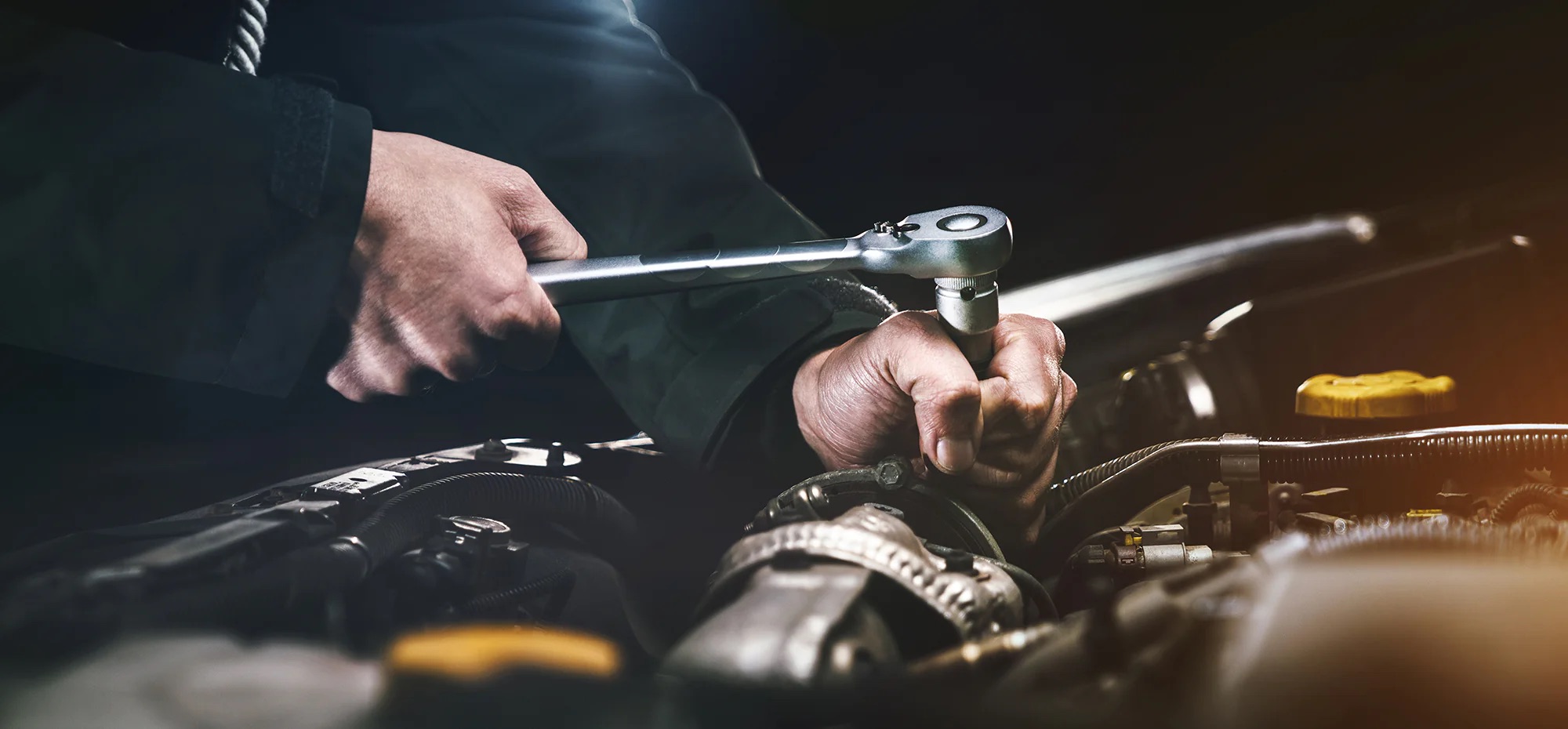

Articles
What Hand Tools Do I Need As A Mechanic
Modified: October 20, 2024
Get expert advice on the essential hand tools for mechanics. Read our articles to find out what tools you need to succeed in your automotive career.
(Many of the links in this article redirect to a specific reviewed product. Your purchase of these products through affiliate links helps to generate commission for Storables.com, at no extra cost. Learn more)
Introduction
Being a mechanic requires a wide range of skills, knowledge, and tools. While the use of power tools is common in this profession, hand tools are indispensable for mechanics. They are essential for performing various tasks, including repairs, maintenance, and diagnostics. Whether you’re a professional mechanic or a do-it-yourself enthusiast, having the right hand tools can make a significant difference in your work efficiency and the quality of your results.
In this article, we will explore the basic hand tools every mechanic should have in their toolbox, as well as some specialized hand tools that can enhance your capabilities. These tools are not only essential for getting the job done but also contribute to your overall safety while working on vehicles. Let’s dive into the world of hand tools and discover what you need to have in your arsenal to excel as a mechanic.
Key Takeaways:
- The right hand tools are essential for mechanics to efficiently perform a wide range of automotive tasks, from basic repairs to complex diagnostics, ensuring professional-level results and safety.
- Investing in high-quality hand tools guarantees longevity, reliable performance, and cost savings in the long run, empowering mechanics to confidently tackle challenges with precision and expertise.
Read more: What Hand Tools Do I Need For Woodworking
Basic Hand Tools
When it comes to basic hand tools, there are a few key essentials that every mechanic should have. These tools are versatile, used in a wide variety of automotive tasks, and form the foundation of any mechanic’s toolbox. Let’s take a closer look at each of these basic hand tools:
- Screwdrivers: A set of quality screwdrivers is essential for removing and tightening screws of different sizes and types. Opt for a set that includes both flathead and Phillips head screwdrivers to cover all your bases.
- Socket Set: A socket set is a must-have for any mechanic. It consists of a ratcheting handle and various sizes of socket attachments. This versatile tool allows you to tackle a wide range of tasks, from removing and installing bolts to loosening and tightening nuts.
- Wrench Set: Like socket sets, wrench sets are vital for working with bolts and nuts. They come in different sizes, shapes, and types, such as combination wrenches, adjustable wrenches, and ratchet wrenches. Having a variety of wrenches allows you to handle different types of fasteners effectively.
- Pliers: Pliers are versatile tools that can be used for gripping, twisting, cutting, and bending objects. Look for a set that includes different types of pliers, such as needle-nose pliers, slip-joint pliers, and locking pliers, to handle a wide range of tasks.
- Hammer: A sturdy hammer is necessary for various tasks, such as pounding out dents, loosening stubborn parts, and tapping objects into place. Choose a hammer with both a metal and rubber face for versatility and to prevent damage to delicate surfaces.
- Pry Bar: When you need to pry or lift heavy objects or remove stubborn parts, a pry bar is invaluable. It allows for leverage and can save a significant amount of time and effort during repairs and disassembly.
- Allen Wrench Set: Allen wrenches, also known as hex keys, are essential for working with hexagonal socket screws, commonly found in engines and other components. A set with a variety of sizes ensures you have the right one for any job.
- Torque Wrench: To ensure accurate and precise tightening of bolts to specific torque specifications, a torque wrench is crucial. It helps prevent over-tightening, which can cause damage, and under-tightening, which may result in loose fasteners.
- Multimeter: A multimeter is an essential diagnostic tool for mechanics. It measures electrical currents, voltages, and resistance, allowing you to troubleshoot electrical issues in vehicles accurately.
- Utility Knife: A sharp utility knife is handy for a variety of tasks, including cutting hoses, belts, and materials. It’s a versatile tool that should always be within reach.
These basic hand tools form the foundation of any mechanic’s toolbox and will enable you to tackle a wide range of automotive tasks. They are essential for everyday repairs, maintenance, and even simple diagnostic procedures. Investing in high-quality tools is essential for durability, accuracy, and long-term value. Remember, these tools will be your trusted companions throughout your career as a mechanic, so choose wisely.
Screwdrivers
Screwdrivers are an essential tool in any mechanic’s toolbox as they are used for removing and tightening screws of various sizes and types. A good set of screwdrivers will come in both flathead and Phillips head varieties, allowing you to handle a wide range of screws commonly found in automotive applications.
When working with screwdrivers, it’s important to choose ones with durable and comfortable handles. Look for screwdrivers with ergonomic handles that provide a comfortable grip and reduce hand fatigue during extended use. Additionally, consider the material of the shaft. Screwdrivers with hardened steel shafts are more durable and less likely to strip or bend when applying torque to stubborn screws.
It’s also crucial to have screwdrivers in different sizes. A set that offers various lengths and tip sizes ensures that you can tackle different screws with ease. Having the right size screwdriver prevents damage to the screw head and allows for efficient and safe removal or tightening.
Not only are screwdrivers essential for general repair work, but they are also commonly used for tasks such as removing interior panels, fastening electrical connections, and adjusting small components. Without a reliable set of screwdrivers, you may find yourself struggling to complete even the simplest of tasks.
When using screwdrivers, it’s important to apply the correct amount of force to avoid stripping or damaging screws. This is especially true for screws made of softer metals, such as aluminum, which are common in automotive applications. Applying too much force can strip the screw head, making it difficult to remove or tighten. On the other hand, not applying enough force can result in loose screws, leading to potential safety hazards or component failure.
By investing in a high-quality set of screwdrivers and using them correctly, you can confidently tackle any screw-related task that comes your way. Whether it’s removing a stubborn screw during a repair or tightening screws to the manufacturer’s specifications, having the right screwdrivers in your toolbox is essential for a mechanic’s success.
Socket Set
A socket set is an indispensable tool for mechanics, providing the necessary leverage and versatility to handle a wide range of automotive fasteners. It consists of a ratcheting handle and a collection of socket attachments in various sizes and shapes. Having a high-quality socket set ensures that you can tackle different tasks effectively, from removing and installing bolts to loosening and tightening nuts.
One of the key advantages of using a socket set is the ability to work in tight spaces. The slim profile of sockets allows access to fasteners in confined areas where traditional wrenches may not fit. This is particularly useful when working on engines, suspension components, or other parts with limited clearance.
When choosing a socket set, look for one that offers a wide range of socket sizes. This will allow you to handle different bolt and nut sizes commonly found in automotive applications. It is also beneficial to have both metric and standard (imperial) socket sizes in your set, as vehicles from different manufacturers may use different measurement systems.
In addition to the socket sizes, consider the quality of the ratcheting handle. Look for one with a comfortable grip and a smooth ratcheting mechanism that allows for easy operation. This will minimize hand fatigue and provide better control during use. A quick-release mechanism is another useful feature, enabling you to quickly and easily change socket attachments without fumbling with traditional setups.
Socket sets also often come with additional accessories, such as extension bars and universal joints. These accessories provide extended reach and flexibility, allowing you to access fasteners in difficult-to-reach areas or at odd angles. They are particularly useful when working on components buried deep within the engine bay or underneath the vehicle.
It’s important to use the correct size socket for each fastener to avoid stripping or damaging the bolt or nut. Using the wrong size may result in rounded corners or excessive wear, making it difficult to remove or tighten the fastener properly. Always refer to the vehicle’s service manual or consult professional guidance for the correct socket size to use.
A high-quality socket set is an investment that will serve you well throughout your career as a mechanic. With the right combination of socket sizes and a reliable ratcheting handle, you can confidently tackle a wide range of fasteners and complete automotive tasks efficiently and effectively.
Wrench Set
A wrench set is a fundamental tool for a mechanic, allowing you to tighten and loosen bolts and nuts with ease. There are various types of wrenches available, each designed to tackle specific tasks. Having a comprehensive wrench set in your toolbox ensures you have the right tool for any job that comes your way.
One of the most commonly used wrench types is the combination wrench, which has an open-end on one side and a box-end on the other. The open-end is useful for quickly loosening or tightening fasteners, while the box-end provides better grip and torque for stubborn or tight bolts and nuts.
Adjustable wrenches are another essential type of wrench. They have an adjustable jaw that allows you to fit them to different sizes of fasteners. While adjustable wrenches are versatile, it’s important to note that they may not provide as secure a grip as a properly sized combination wrench.
Ratchet wrenches offer a convenient solution for tasks that require continuous turning in tight spaces. They have a ratcheting mechanism that allows you to tighten or loosen fasteners without repeatedly lifting and resetting the wrench. Ratchet wrenches come in various sizes and can significantly reduce the time and effort required for repetitive tasks.
When choosing a wrench set, it’s important to consider the quality of the tools. Look for wrenches made from durable materials, such as chrome vanadium or heat-treated steel, as they are less likely to break or bend under heavy use. Additionally, check for wrenches with comfortable handles that provide a firm grip and minimize hand fatigue during extended use.
A comprehensive wrench set should include both metric and standard (imperial) sizes to cover a wide range of automotive applications. This is important because different fasteners on vehicles may use either metric or standard measurements, depending on the vehicle’s origin.
In addition to the basic wrench types, there are specialized wrenches designed for specific tasks. These include torque wrenches, which allow you to tighten fasteners to precise specifications, and flare nut wrenches, which are used for working on fittings in brake and fuel lines.
Having a variety of wrenches in your toolbox ensures that you’re well-prepared for any repair or maintenance task that comes your way. Whether you’re working on engine components, suspension systems, or undercarriage parts, a reliable wrench set is essential for a mechanic’s success.
Read more: What Tools Do I Need For Woodworking
Pliers
Pliers are versatile hand tools that every mechanic should have in their toolbox. They are designed for gripping, twisting, cutting, and bending objects, making them essential for a wide range of automotive tasks.
One of the most common types of pliers is the needle-nose pliers. These have long, slender jaws that taper to a point, allowing for precise gripping in tight spaces. They are ideal for tasks such as holding small components, reaching into tricky areas, or bending wires.
Another widely used type of pliers is the slip-joint pliers. These have adjustable jaws that can be set to different widths for gripping large or small objects. They are versatile and can be used for tasks such as gripping and turning nuts, bolts, or pipes.
Locking pliers, also known as Vise-Grips, are popular for their ability to lock onto objects securely. They have an adjustable jaw that can be locked into place using a mechanism, allowing for hands-free operation. Locking pliers are particularly useful when you need to hold or clamp objects firmly in place.
When choosing pliers, it’s important to consider the quality of the tool. Look for pliers made from durable materials such as hardened steel to ensure they can withstand repeated use without bending or breaking. Additionally, check for pliers with ergonomic handles that provide a comfortable grip and reduce hand fatigue during prolonged use.
It’s also worth having a set of wire-cutting pliers or wire strippers. These specialized pliers have a cutting blade or stripping slots that allow for clean and efficient wire cutting or stripping. They are frequently used in electrical work, such as connecting or repairing wires in a vehicle’s electrical system.
Having a variety of pliers in your toolbox ensures that you have the right tool for various tasks. Whether you’re gripping, twisting, cutting, or bending, pliers provide the necessary leverage and control to get the job done efficiently and effectively. They are invaluable for both general repairs and more specific tasks that require precision and strength.
Remember to use the appropriate pliers for each task to ensure that you’re exerting even pressure and minimizing the risk of damaging your workpiece or injuring yourself. When used correctly, pliers are a reliable and essential tool for any mechanic.
Hammer
A hammer is a versatile hand tool that plays an essential role in a mechanic’s toolbox. Its primary function is to deliver impact force, allowing you to drive or remove objects, shape materials, or break things apart. Having a reliable hammer is crucial for various automotive tasks, such as pounding out dents, loosening stubborn parts, or tapping objects into place.
When choosing a hammer for automotive use, consider the material and construction. Look for a hammer with a durable steel head that can withstand repeated impacts without chipping or deforming. The head should be securely attached to the handle to prevent it from dislodging during use.
Hammer handles are typically made of wood, fiberglass, or steel. Wood handles offer a good balance of durability and shock absorption, while fiberglass handles are lightweight and resistant to moisture and chemicals. Steel handles provide extra strength and durability but may transmit more vibration to the user’s hand.
It’s important to have hammers with different sizes and weights to tackle various tasks effectively. For general automotive use, a standard claw hammer or ball-peen hammer with a weight between 16 to 24 ounces is suitable. A lighter hammer offers better control for precision work, while a heavier one delivers more force for heavy-duty tasks.
When using a hammer, be mindful of how you grip it and the force you apply. For striking tasks, hold the handle near the end for maximum impact. For more precise control, grip closer to the head. Avoid gripping the hammer too tightly as it can lead to hand fatigue and potentially impair your accuracy.
When using a hammer to drive or remove objects, aim for the center of the object to distribute the force evenly and minimize the risk of damaging the surrounding area. For delicate or fragile components, use a softer striking tool, such as a rubber mallet, to minimize the risk of causing damage.
To protect yourself and others, ensure you have a clear and stable work area when using a hammer. Take precautions to prevent parts or debris from flying and wearing personal protective equipment, such as safety glasses or gloves, when necessary.
A reliable hammer is an invaluable tool that allows you to exert controlled force in various automotive tasks. With the right hammer in your toolbox, you can confidently tackle any pounding or shaping task that comes your way, making it an essential tool for every mechanic.
Pry Bar
A pry bar is a versatile and indispensable tool for any mechanic. It is designed to provide leverage and help you pry apart or separate objects, making it essential for automotive tasks that require disassembly or component removal.
Pry bars come in various sizes and shapes. The most common type is a flat pry bar, which has a straight, flat blade at one end and a curved or angled tip at the other. This design allows you to insert the flat end between two components and apply leverage to separate them.
When choosing a pry bar, consider the material and construction. Look for a pry bar made from durable and heat-treated steel, as it can withstand heavy use without bending or breaking. Additionally, ensure that the pry bar has a comfortable and ergonomic handle for a secure grip and reduced hand fatigue during extended use.
Pry bars are particularly useful when removing stubborn or tightly fitted components, such as trim panels, engine covers, or suspension parts. They provide the necessary leverage to pry apart objects without causing damage. However, it’s important to exercise caution to avoid scratching or marring the surrounding surfaces. To prevent damage, you may want to use a protective cover or a cloth between the pry bar and the delicate part.
Aside from separating components, pry bars can also be used to align or position parts during assembly. Their flat and sturdy design allows you to gently tap or nudge components into place without damaging them.
Pry bars are also beneficial for tasks that require leverage, such as removing stubborn nails, bending metal components, or lifting heavy objects. They offer a mechanical advantage by increasing the force applied at the tip of the bar, making these tasks easier and more efficient.
When using a pry bar, avoid using excessive force or prying at extreme angles, as this can cause damage to the object or result in injury. Instead, use gradual, controlled pressure to pry apart or separate components. It’s also important to wear appropriate personal protective equipment, such as safety glasses and gloves, to protect yourself from flying debris or sharp edges.
Having a pry bar in your toolbox gives you the advantage of additional leverage and versatility in tackling various automotive tasks. Whether you’re disassembling components, removing stubborn parts, or aligning objects during assembly, a pry bar is a valuable tool that no mechanic should be without.
Allen Wrench Set
An Allen wrench set, also known as a hex key set, is an essential tool for mechanics when working with hexagonal socket screws and bolts frequently found in engines and other automotive components. These screws have a recessed hexagonal shape that requires a specific type of wrench for installation or removal.
An Allen wrench set typically includes a range of sizes to accommodate various screw dimensions commonly found in automotive applications. The wrenches are L-shaped, with one end featuring a hexagonal tip and the other end often providing a ball-shaped tip for additional flexibility in hard-to-reach areas.
When selecting an Allen wrench set, it’s important to choose one made from high-quality materials, such as hardened steel, to ensure durability and prevent the wrenches from rounding off or easily wearing down during use. Look for wrenches with a durable and comfortable grip for easy handling and reduced hand fatigue.
Allen wrenches are commonly used for tasks such as removing and installing bolts on brake calipers, engine components, bike chains, and other automotive parts. They provide a secure and precise fit in the recessed hexagonal heads of these screws, minimizing the risk of stripping them.
When using an Allen wrench, ensure that it is fully inserted into the screw to reduce the chance of slipping and damaging the screw or surrounding components. Apply gradual and steady pressure to avoid rounding off the screw head or causing injury.
The compact size and versatility of Allen wrenches make them an indispensable tool for mechanics. They are lightweight and easy to carry, allowing you to have the necessary tools on hand for various automotive repairs and maintenance tasks.
Whether you’re performing routine maintenance or troubleshooting specific issues, having an Allen wrench set in your toolbox ensures that you have the right tool to handle hexagonal socket screws commonly found in automotive applications. It’s an essential tool for any mechanic working on engines, transmissions, or other components that use these types of fasteners.
Torque Wrench
A torque wrench is a precision tool that every mechanic should have in their toolbox. It allows you to apply a specific amount of torque or rotational force to fasteners, ensuring that they are tightened to the manufacturer’s recommended specifications.
Using a torque wrench is crucial for several reasons. First, it helps prevent over-tightening, which can lead to stripped threads, damaged components, or even structural failure. Conversely, under-tightening can result in loose fasteners that may compromise safety or cause parts to come loose during operation.
A torque wrench typically features a calibrated gauge or indicator that allows you to set and monitor the desired torque level. As you apply force to the fastener, the wrench will click or provide visual feedback when the preset torque is reached, indicating that you should stop applying force.
When choosing a torque wrench, consider the torque range and the units of measurement. Make sure the torque range covers the specifications you commonly encounter in your automotive work. Additionally, choose a wrench that allows you to work comfortably with the units of measurement (e.g., Newton-meters or foot-pounds) that you are most familiar with.
It’s important to handle and use a torque wrench correctly to ensure accurate results. Start by setting the torque level according to the manufacturer’s specifications for the specific fastener you are working with. Insert the appropriate socket or attachment onto the wrench, and then fit it onto the fastener. Apply force slowly and steadily until the wrench signals that the preset torque has been reached.
Regular calibration of your torque wrench is also essential to maintain its accuracy. Over time, a torque wrench can lose its calibration, leading to incorrect torque readings. Consult the manufacturer’s instructions or have your torque wrench calibrated by a professional to ensure reliable and accurate performance.
A torque wrench is a valuable tool for any mechanic, ensuring that fasteners are tightened to the correct specification, promoting safety and preventing damage. By incorporating a torque wrench into your toolbox, you’ll have the confidence that you’re following proper torque guidelines and achieving consistent results in your automotive work.
Multimeter
A multimeter is a versatile diagnostic tool that every mechanic should have in their toolbox. It is used to measure various electrical properties, including voltage, current, and resistance, allowing you to troubleshoot and diagnose electrical issues in vehicles accurately.
When working on automotive electrical systems, a multimeter can help you identify faulty components, check wiring continuity, and verify voltage levels. It enables you to pinpoint the source of electrical problems, such as a malfunctioning sensor or a short circuit.
A typical multimeter has several functions, including voltage measurement (both AC and DC), current measurement, resistance measurement, and continuity testing. It may also include additional features such as diode testing and temperature measurement, depending on the model and capabilities.
When selecting a multimeter, consider the range and accuracy of the measurements it offers. Ensure that the multimeter covers the voltage and current ranges commonly encountered in automotive applications. Look for a model with a high level of accuracy to ensure reliable readings.
It’s also important to choose a multimeter that is easy to use and has a clear display for reading the measurements. Some multimeters have additional features like auto-ranging, which automatically selects the appropriate range for the measurement being taken, making them more user-friendly.
When using a multimeter, always follow safety precautions, such as wearing appropriate personal protective equipment, especially when working with live electrical systems. Familiarize yourself with the proper use of the different measurement functions, and carefully follow the manufacturer’s guidelines for safe and accurate measurements.
In addition to troubleshooting electrical issues, a multimeter can also be used for general maintenance tasks, such as testing battery voltage or checking the charging system’s output. Regular use of a multimeter can help identify potential problems before they become major issues.
A multimeter is an essential tool for any mechanic working on automotive electrical systems. It allows you to accurately diagnose issues, confirm the integrity of electrical connections, and ensure proper operation of various components. By having a multimeter in your toolbox, you’ll have the ability to perform accurate electrical diagnostics and provide reliable repairs to your customers or maintain your own vehicles.
Utility Knife
A utility knife is a versatile tool that comes in handy for a variety of tasks in the automotive field. Its sharp and retractable blade makes it ideal for cutting materials such as hoses, belts, gaskets, and packaging. Having a utility knife in your toolbox ensures you can easily and safely perform many different cutting tasks.
When selecting a utility knife, look for one with a sturdy and durable handle that provides a comfortable grip. A retractable blade mechanism is essential for safety, allowing you to extend and retract the blade as needed. Consider choosing a knife with a locking feature that keeps the blade securely in place during use.
The blade of a utility knife should be sharp and easily replaceable. Some utility knives have a segmented blade that can be snapped off to reveal a fresh cutting edge once the previous section becomes dull. This feature extends the life of the blade and ensures consistent cutting performance.
One of the main uses of a utility knife in the automotive field is cutting various materials during repairs and installations. You can use it to trim hoses, remove gaskets, or cut through packaging when opening new parts or supplies. The sharp blade allows for precise and clean cuts, making your work more efficient and professional-looking.
While using a utility knife, it’s important to observe safety precautions. Always ensure the blade is locked securely in place before using it, and retract the blade back into the handle when not in use. Keep your fingers away from the cutting path and use light, controlled pressure to avoid accidents or injuries.
In addition to cutting tasks, a utility knife can also serve as a general-purpose tool in your toolbox. Its compact size and versatility make it suitable for a range of tasks beyond cutting, such as opening paint cans, scraping surfaces, or marking materials.
A utility knife is an essential tool that proves its usefulness time and time again in the automotive field. Its sharp blade, versatility, and ease of use make it a go-to tool for mechanics, allowing them to perform a wide range of cutting tasks efficiently and safely. Whether you’re working in a professional shop or tackling DIY repairs, a utility knife is a must-have tool in your toolbox.
Invest in high-quality hand tools such as wrenches, sockets, screwdrivers, pliers, and hammers. Look for durable materials and ergonomic designs to make your work easier and more efficient.
Specialized Hand Tools
In addition to the basic hand tools we discussed earlier, there are specialized hand tools that can enhance your capabilities as a mechanic. These tools are designed for specific tasks and can make a significant difference in your efficiency and the quality of your work. Let’s take a look at some of these specialized hand tools:
- Brake Bleeder Kit: This kit allows you to bleed the brake system, removing air bubbles and ensuring proper brake function. It typically includes a vacuum pump and various attachments for different brake bleeder valves.
- Compression Tester: Used to measure the compression levels in a cylinder, this tool helps diagnose engine problems, such as worn piston rings or faulty valves. It consists of a gauge and specialized fittings.
- Oil Filter Wrench: As the name suggests, this wrench is designed specifically for removing and installing oil filters. It provides a secure grip on the filter, allowing for easy removal and tightening.
- Spark Plug Socket Set: A set of spark plug sockets helps you remove and install spark plugs. These sockets have rubber inserts or magnets to securely hold the spark plug and prevent damage during removal and installation.
- Feeler Gauge Set: This set of thin, metal blades allows you to measure the gap between engine components, such as valve clearances or ignition points. It helps ensure precise settings and optimal engine performance.
- Timing Light: A timing light is used to set the ignition timing of an engine. It emits a strobe light that allows you to see the timing marks on the engine and adjust accordingly for proper ignition timing.
- Wire Crimper and Stripper: These tools are specifically designed for working with electrical wires. They allow you to strip insulation, crimp connectors, and create secure electrical connections.
- Battery Terminal Puller: This tool enables you to safely remove battery terminals without damaging them or the battery. It provides a firm grip and allows for easy and controlled removal.
- Flaring Tool: A flaring tool is used to create precision flares on tubing, such as brake lines or fuel lines. It ensures leak-free connections and is an essential tool for any automotive repair involving tubing.
- Impact Driver: An impact driver delivers high torque with strong rotational force. It is useful for loosening or tightening stubborn fasteners that may be rusted or stuck.
These specialized hand tools enhance your capabilities as a mechanic and allow you to tackle specific tasks with precision and efficiency. By complementing your basic hand tools with these specialized tools, you’ll be well-equipped to handle a wide range of automotive repairs, diagnostics, and maintenance tasks.
Brake Bleeder Kit
A brake bleeder kit is a specialized hand tool that is essential for maintaining the brake system in a vehicle. It allows you to remove air bubbles from the brake lines, ensuring proper brake function and improving overall safety.
When air enters the brake lines, it can lead to a spongy brake pedal, reduced braking performance, or even complete brake failure. Bleeding the brakes removes this trapped air, restoring the system’s hydraulic pressure and ensuring that the brakes operate as intended.
A brake bleeder kit typically consists of a vacuum pump, tubing, and various attachments that connect to the brake bleeder valves on the calipers or wheel cylinders. The vacuum pump creates a vacuum in the system, drawing brake fluid and any trapped air out through the bleeder valves.
Using a brake bleeder kit involves a systematic process of opening the bleeder valves, attaching the tubing and vacuum pump, and then creating a vacuum to extract the fluid. The process should be done in a specific order, usually starting with the wheel farthest from the master cylinder and working your way closer.
By using a brake bleeder kit, you can ensure that the brake system is free from air bubbles that can cause sponginess or reduced braking performance. The kit allows you to perform brake bleeding efficiently and effectively, saving you time and ensuring the safety of the vehicle and its occupants.
Brake bleeding is an important maintenance task that should be performed whenever the brake fluid is changed, after brake system repairs, or if there are signs of air in the brake lines. It is particularly crucial for vehicles with anti-lock brake systems (ABS), as air trapped in the system can interfere with the proper operation of the ABS components.
When using a brake bleeder kit, it’s important to follow the manufacturer’s instructions and use caution to avoid introducing air into the system or over-tightening the bleeder valves. It’s also essential to use the correct type of brake fluid specified by the vehicle manufacturer.
By having a brake bleeder kit in your toolbox, you can perform brake maintenance and repair tasks with confidence. It ensures that the brake system operates at its best, providing reliable and safe braking performance on the road.
Compression Tester
A compression tester is a specialized hand tool designed to measure the compression levels in the cylinders of an engine. It is an essential tool for diagnosing engine problems and evaluating the overall health and performance of an engine.
The compression tester consists of a gauge and a threaded adapter that is inserted into the spark plug hole of each cylinder. Once connected, the engine is cranked over to measure the compression pressure that builds up inside the cylinder during the compression stroke.
By measuring the compression pressure in each cylinder, you can determine if there are any problems with the engine’s piston rings, valves, or cylinder head gasket. Low compression could indicate issues such as worn piston rings, leaky valves, or a blown head gasket. Conversely, significantly different compression readings between cylinders may signal an internal engine problem.
Using a compression tester involves a step-by-step process. First, remove the spark plugs from each cylinder. Then, thread the compression tester’s adapter into the spark plug hole of one cylinder at a time. Make sure the throttle and ignition systems are disabled, and crank the engine over a few times to build up compression pressure. The gauge on the tester will display the compression reading.
Compression test readings are typically measured in PSI (pounds per square inch) or Bar. These measurements can be compared with the manufacturer’s specifications for the specific engine to determine if the compression level is within an acceptable range.
By performing a compression test, you can identify potential engine problems before they become more severe or cause significant damage. It allows for targeted troubleshooting, saving time and resources by pinpointing the issue and preventing unnecessary repairs or part replacements.
A compression tester is an essential tool for any mechanic working on engines, whether it’s diagnosing engine issues, performing pre-purchase inspections, or evaluating engine performance during routine maintenance. With this tool in your toolbox, you can accurately assess the health of an engine and provide reliable repairs and maintenance services to your customers or maintain your own vehicles.
Oil Filter Wrench
An oil filter wrench is a specialized hand tool designed specifically for removing and installing oil filters. It provides a firm grip on the filter, allowing for easy and efficient removal, even if the filter is tight or hard to reach.
Oil filters play a crucial role in keeping the engine’s oil clean and free from contaminants. Regularly changing the oil filter is essential for maintaining engine performance and prolonging the life of the engine. However, oil filters can often become tightly secured or difficult to remove due to factors like heat, debris, or improper installation.
An oil filter wrench typically features an adjustable design that allows it to accommodate various filter sizes. Many wrenches have a band or strap that wraps around the filter, providing a secure grip, while others have gripping teeth or flutes that lock onto the filter’s surface. Some oil filter wrenches are designed specifically for certain types of filters, such as canister-style filters or cartridge-style filters.
When using an oil filter wrench, it’s important to select the appropriate wrench size and fit it securely onto the filter. Apply force in a counterclockwise direction to loosen the filter. Once loosened, the filter can be removed by hand.
Having an oil filter wrench in your toolbox makes the process of changing oil filters faster and easier. It saves you time and effort that would otherwise be spent struggling to remove a stubborn or tightly secured filter. With the right wrench, you can confidently remove and install oil filters without damaging them or surrounding components.
Properly maintaining the oil filter is essential for the overall health and performance of the engine. By regularly changing the oil filter and using an oil filter wrench to ensure a secure grip, you can effectively remove contaminants from the engine’s oil and help extend the life of the engine.
Whether you’re a professional mechanic or a DIY enthusiast, having an oil filter wrench in your toolbox is a must. It will simplify the process of changing oil filters and ensure that you can effectively maintain and service your vehicle’s engine. Invest in a high-quality oil filter wrench to make oil filter changes a breeze and keep your engine running smoothly.
Spark Plug Socket Set
A spark plug socket set is a specialized hand tool designed specifically for removing and installing spark plugs. It provides a secure grip on the spark plug, allowing for easy and efficient access to these vital components of the engine.
Spark plugs play a critical role in the combustion process of a gasoline engine. They ignite the air-fuel mixture in the combustion chamber, creating the necessary spark to power the engine. Over time, spark plugs can become worn or fouled, leading to reduced engine performance, misfires, or difficulty starting the vehicle.
A spark plug socket set typically includes different socket sizes to fit the various spark plug sizes commonly found in automotive engines. These sockets have a rubber insert or a built-in magnet to securely hold the spark plug, preventing it from falling into the engine or becoming damaged during removal or installation.
When using a spark plug socket set, it’s important to select the appropriate socket size for the specific spark plug being replaced. Insert the socket onto the spark plug and use a ratchet or a wrench to loosen or tighten the spark plug. Follow the manufacturer’s specifications for the correct torque setting during installation.
Having a spark plug socket set in your toolbox allows for efficient maintenance and replacement of spark plugs. It ensures that you can confidently access and service these critical engine components without the risk of damaging the spark plugs or surrounding components.
Regularly inspecting and replacing spark plugs is crucial for maintaining optimal engine performance. A worn or fouled spark plug can lead to decreased fuel efficiency, misfires, and other engine problems. With a spark plug socket set, you can easily remove and inspect the spark plugs, identifying any issues and replacing them as necessary.
Whether you’re a professional mechanic or a DIY enthusiast, a spark plug socket set is a must-have tool for any engine tune-up or maintenance task. By investing in a high-quality set, you’ll have the confidence to tackle spark plug replacements and keep your engine running smoothly and efficiently.
Read more: Where Do I Find Hand Tools For Osha Training
Feeler Gauge Set
A feeler gauge set is a precise and indispensable hand tool used for measuring the gap or clearance between two surfaces. It consists of a set of thin, metal blades of varying thicknesses, each labeled with its measurement.
Feeler gauges are commonly used in automotive applications to measure critical gaps such as valve clearances, ignition point gaps, or bearing clearances. Proper clearances are essential for optimal engine performance and longevity.
Using a feeler gauge set involves selecting the appropriate blade thickness that fits snugly between the surfaces being measured. The blades are inserted into the gap, and the user can determine the measurement by identifying the blade that fits without being too loose or too tight.
Feeler gauges are accurate tools for achieving proper tolerances during engine maintenance and repair. They ensure that components are correctly adjusted and operating within manufacturer specifications. By regularly checking and adjusting critical clearances, you can prevent potential engine problems such as valve train noise, misfires, or premature wear.
Feeler gauges are available in both metric and imperial units, allowing you to work with different measurement systems depending on the application and vehicle specifications.
When using a feeler gauge set, it’s important to handle the blades carefully and avoid bending or damaging them. Store the blades securely to prevent any distortion or loss of accuracy. Regularly clean and inspect the blades to ensure their condition and accuracy.
Whether you’re a professional mechanic or a DIY enthusiast, a feeler gauge set is a valuable tool for precision measurements in engine maintenance and repair. It allows you to achieve the correct clearances and ensures that your vehicle’s engine operates at its best performance and efficiency.
Investing in a high-quality feeler gauge set will provide you with accurate measurements and long-lasting durability. By incorporating a feeler gauge set into your toolbox, you can confidently perform critical engine adjustments and maintain optimal performance in your vehicles or those of your customers.
Timing Light
A timing light is a specialized hand tool used in automotive diagnostics and engine tuning. It is designed to measure and adjust the ignition timing of an engine, ensuring optimal performance and efficiency.
The ignition timing refers to the precise moment when the spark plug fires, igniting the air-fuel mixture in the combustion chamber. Proper ignition timing is crucial for efficient combustion, power output, and overall engine performance.
A timing light consists of a strobe light, an inductive pickup, and a set of wires. The inductive pickup connects to the spark plug wire of the cylinder being measured, while the strobe light is directed at the engine’s timing marks.
When the engine is running, the timing light emits a flash of light each time the spark plug fires. By illuminating the timing marks on the engine’s crankshaft pulley or harmonic balancer, the timing light allows you to determine whether the ignition timing is correctly set or needs adjustment.
Using a timing light involves connecting the inductive pickup to the spark plug wire and positioning the timing light near the timing marks. As the engine runs, the flashing light from the timing light combines with the stationary timing marks, allowing you to observe the timing relationship.
To adjust the ignition timing, you typically need to loosen the distributor hold-down bolt and rotate the distributor while observing the timing marks with the timing light. Adjustments should be made based on the manufacturer’s specifications and guidelines.
Proper ignition timing improves fuel efficiency, power delivery, and engine smoothness. It is particularly important during engine modifications or when diagnosing issues related to misfires, performance problems, or abnormal engine behavior.
Whether you’re a professional mechanic or a DIY enthusiast, a timing light is a valuable tool for tuning and diagnosing engine performance. It allows you to accurately set and adjust the ignition timing, ensuring that your engine operates at its optimum level.
Investing in a quality timing light will provide you with accurate ignition timing measurements and ease of use. By adding a timing light to your toolbox, you’ll have the ability to precisely fine-tune your engine’s ignition timing, resulting in improved performance, fuel economy, and overall reliability.
Wire Crimper and Stripper
A wire crimper and stripper is a specialized hand tool used for working with electrical wires. It is designed to strip off the insulation from wires and to crimp connectors onto the bare wire ends, creating secure electrical connections.
Electrical wiring is an integral part of vehicles, and having the ability to properly strip and crimp wires is essential for various automotive electrical tasks, such as repairing a wiring harness, installing new electrical components, or troubleshooting electrical issues.
A wire stripper is used to remove the insulation from the end of a wire, exposing the bare conductor underneath. The stripper typically consists of multiple notches or blades that correspond to different wire sizes. By selecting the appropriate notch, you can easily and accurately strip off the insulation without damaging the wire.
A wire crimper is used to attach connectors to the bare wire ends. It compresses the connector around the wire, creating a secure and reliable electrical connection. The crimper usually features multiple size options to accommodate various connector sizes, providing a consistent and professional crimp every time.
Using a wire crimper and stripper involves positioning the tool on the wire, aligning it with the desired stripping or crimping area, and then applying pressure to strip or crimp the wire. It’s important to use the correct size notch or die for the wire and connector being used to ensure a proper connection.
Properly crimped connections not only provide solid electrical conductivity but also help maintain the integrity and durability of the electrical connections. Securely crimped wires are less likely to come loose or become damaged, ensuring a reliable electrical system in your vehicle.
Whether you’re repairing an electrical circuit, adding new components, or modifying your vehicle’s electrical system, having a wire crimper and stripper in your toolbox will make the process easier, more efficient, and safer.
Investing in a high-quality wire crimper and stripper will ensure precise wire stripping and consistent crimping results. With this tool, you can confidently work with electrical wires, ensuring proper connections and reliable electrical performance in your automotive applications.
Battery Terminal Puller
A battery terminal puller is a specialized hand tool designed specifically for removing battery terminals from automotive batteries. It provides a secure grip and leverage to safely disconnect the terminals without damaging the battery or surrounding components.
Automotive batteries are essential for powering the electrical systems of a vehicle. Over time, battery terminals can become corroded, making it difficult to remove the terminals by hand. This is where a battery terminal puller comes in handy.
A battery terminal puller typically consists of a pair of gripping jaws or hooks that securely grasp the battery terminal. By rotating a central screw or knob, the puller exerts gradual pressure on the terminal, freeing it from its connection to the battery post.
Using a battery terminal puller involves positioning the jaws or hooks around the terminal, ensuring a secure grip. As you rotate the screw or knob, the puller gradually applies force, allowing the terminal to be safely pulled away from the battery post.
Having a battery terminal puller in your toolbox provides several advantages. First, it helps avoid damage to the battery by preventing excessive force or accidentally prying on the terminal, which can crack or damage the battery case.
Second, a battery terminal puller helps protect you from potential electrical shocks. It allows you to safely disconnect the battery terminals without coming into direct contact with the battery or surrounding electrical components.
Additionally, a battery terminal puller ensures a clean and complete disconnection of the terminal, reducing the risk of short circuits or electrical malfunctions when performing maintenance or repairs on the vehicle’s electrical system.
When choosing a battery terminal puller, look for one that is compatible with different battery terminal designs and sizes. Make sure it is made from a durable material, such as hardened steel, to withstand repeated use without bending or breaking.
Whether you’re performing routine battery maintenance, replacing the battery, or working on electrical system repairs, having a battery terminal puller in your toolbox is essential. It allows for safe and efficient disconnection of battery terminals, ensuring proper servicing and minimizing the risk of damage or injury.
Invest in a high-quality battery terminal puller to make battery maintenance and repairs easier and more reliable. With this tool, you can confidently work with the electrical system and battery components, ensuring a smooth and efficient operation of your vehicle.
Flaring Tool
A flaring tool is a specialized hand tool used for creating precision flares on tubing, such as brake lines or fuel lines. It is an essential tool for any automotive repair or installation that involves working with metal tubing.
Flares are important for creating leak-free connections between tubing and fittings. They provide a secure and reliable seal that prevents fluid or gas from escaping, ensuring the proper functioning and safety of the automotive system.
A flaring tool typically consists of a yoke, a compression screw, and various dies. The yoke holds the tubing securely, while the dies shape the end of the tubing into a flare. The compression screw is used to apply the necessary pressure to create the flare.
Using a flaring tool involves selecting the appropriate die size for the tubing diameter and inserting it into the yoke. The tubing is then inserted into the die, and the yoke is tightened to secure the tubing. As the compression screw is turned, it presses against the tubing, shaping it into the desired flare shape.
Flaring tools can create different types of flares, such as single flares, double flares, or bubble flares, depending on the system requirements. Different automotive systems may require specific types of flares, and it’s important to follow the manufacturer’s guidelines and specifications.
Flaring tools are most commonly used in brake system repairs or replacements. For example, when replacing a brake line, a flaring tool is necessary to create the proper flare on the tubing ends for a secure connection between the brake line and the brake fittings.
Having a flaring tool in your toolbox allows you to work with metal tubing confidently. It ensures that you can create professional-grade flares that meet the required standards, providing leak-free connections and reliable performance in automotive systems.
When selecting a flaring tool, look for one that is robust, durable, and able to accommodate the tubing sizes commonly used in automotive applications. Additionally, choose a tool that provides easy operation and consistent results to ensure the quality of your flares.
Investing in a high-quality flaring tool will save you time and money in the long run, as it allows you to create proper and reliable flares for various automotive applications. With this tool, you can work with confidence, knowing that your flared connections are secure and leak-free.
Impact Driver
An impact driver is a powerful and versatile hand tool that provides high torque and rotational force. It is commonly used in automotive applications for loosening or tightening stubborn fasteners that may be rusted, corroded, or tightly secured.
Unlike a traditional screwdriver or wrench, an impact driver uses concussive blows to deliver torque to the fastener. This rapid rotation combined with the impact force allows the tool to generate greater torque, making it more effective in removing or installing stubborn or hard-to-reach fasteners.
One of the main advantages of an impact driver is its ability to break loose seized or stuck fasteners. The quick, repeated impacts help to free the fastener by applying strong rotational force. This is particularly useful when working on older vehicles or components that have been exposed to harsh conditions.
Impact drivers are available in both manual (handheld) and powered (electric or pneumatic) versions. Handheld impact drivers feature a spring-loaded mechanism that is triggered by striking the top of the tool with a hammer or mallet. Powered impact drivers, on the other hand, are powered by electricity or compressed air, delivering high torque with minimal effort.
A common use for an impact driver in automotive applications is during tire changes. It allows for quick and efficient removal of lug nuts, which are often tightly secured. Impact drivers are also useful for removing engine and suspension components, such as stubborn bolts, ball joints, and other mechanical fasteners.
When using an impact driver, it’s important to wear appropriate personal protective equipment, such as safety glasses or gloves, to protect against flying debris or accidental contact with the fastener or surrounding components.
When selecting an impact driver, consider the level of torque required for your specific automotive tasks. Look for a tool with adjustable torque settings to ensure that you can fine-tune the force according to the application. Additionally, choose a tool with a comfortable grip for ease of use and reduced hand fatigue during prolonged use.
Having an impact driver in your toolbox provides a significant advantage when working on automotive repairs or maintenance tasks. With its high torque and impact force, an impact driver can help you tackle even the most stubborn or rusted fasteners, making your work more efficient and less time-consuming.
Investing in a high-quality impact driver will ensure durability and reliability, allowing you to confidently take on various automotive projects. With this tool in hand, you can overcome challenging fasteners and complete repairs with relative ease and precision.
Conclusion
Hand tools are the backbone of any mechanic’s toolbox, providing the necessary precision, control, and versatility to tackle a wide range of automotive tasks. From basic hand tools like screwdrivers and wrenches to specialized tools like brake bleeders and impact drivers, each tool serves a specific purpose and contributes to the efficiency and effectiveness of a mechanic’s work.
Investing in a comprehensive set of hand tools ensures that you have the right equipment to perform routine maintenance, diagnose issues, and repair vehicles with confidence. Whether you’re a professional mechanic or a DIY enthusiast, having the essential hand tools is essential for achieving professional-level results.
When selecting hand tools, consider factors such as durability, comfort, and compatibility with your specific automotive applications. High-quality tools ensure longevity and reliable performance, saving you time and money in the long run.
Remember to use hand tools safely and follow proper procedures when working on vehicles. Adhere to manufacturer’s guidelines, wear appropriate protective gear when necessary, and prioritize your safety and the safety of others.
In conclusion, building a comprehensive collection of hand tools guarantees that you’ll be prepared for any automotive task that comes your way. From basic repairs to complex diagnostics, these tools empower you to tackle challenges with confidence and precision. So equip your toolbox with the essential hand tools and embark on your automotive repair journey with expertise and efficiency.
Frequently Asked Questions about What Hand Tools Do I Need As A Mechanic
Was this page helpful?
At Storables.com, we guarantee accurate and reliable information. Our content, validated by Expert Board Contributors, is crafted following stringent Editorial Policies. We're committed to providing you with well-researched, expert-backed insights for all your informational needs.
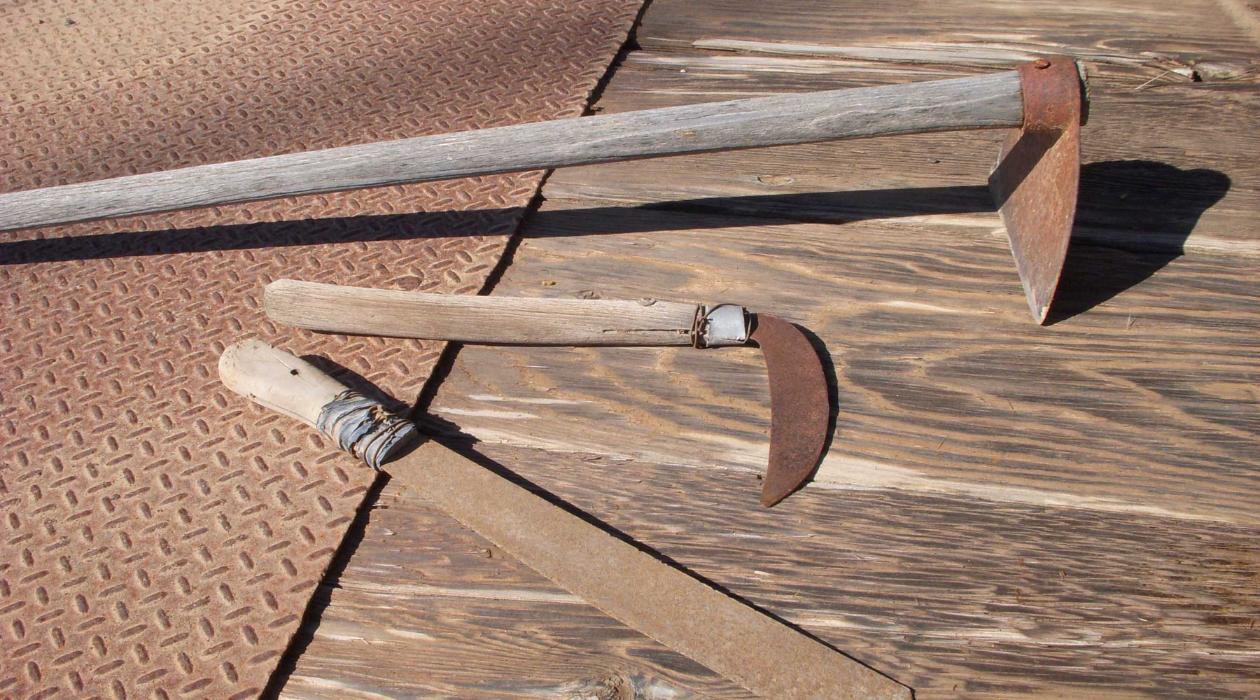
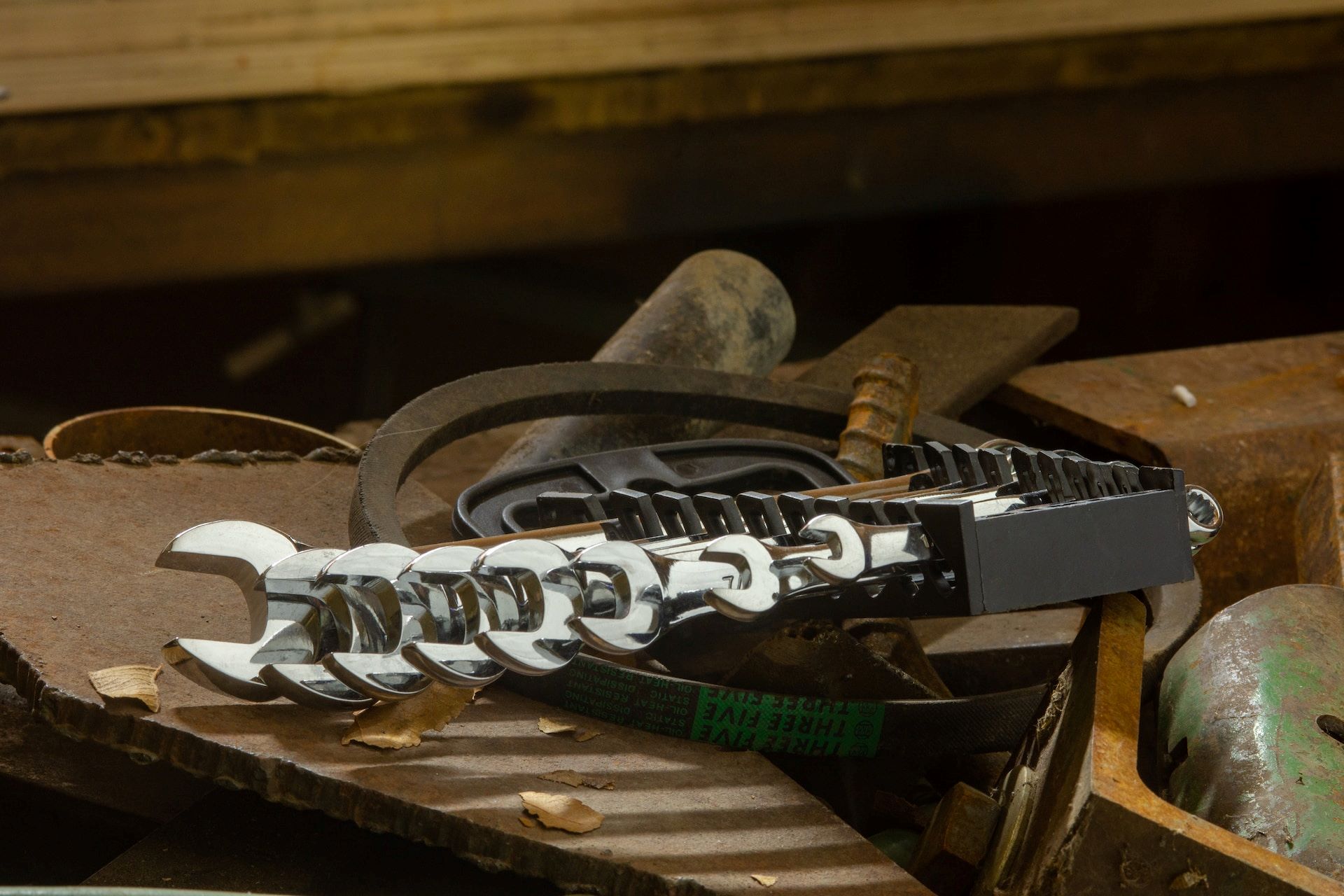
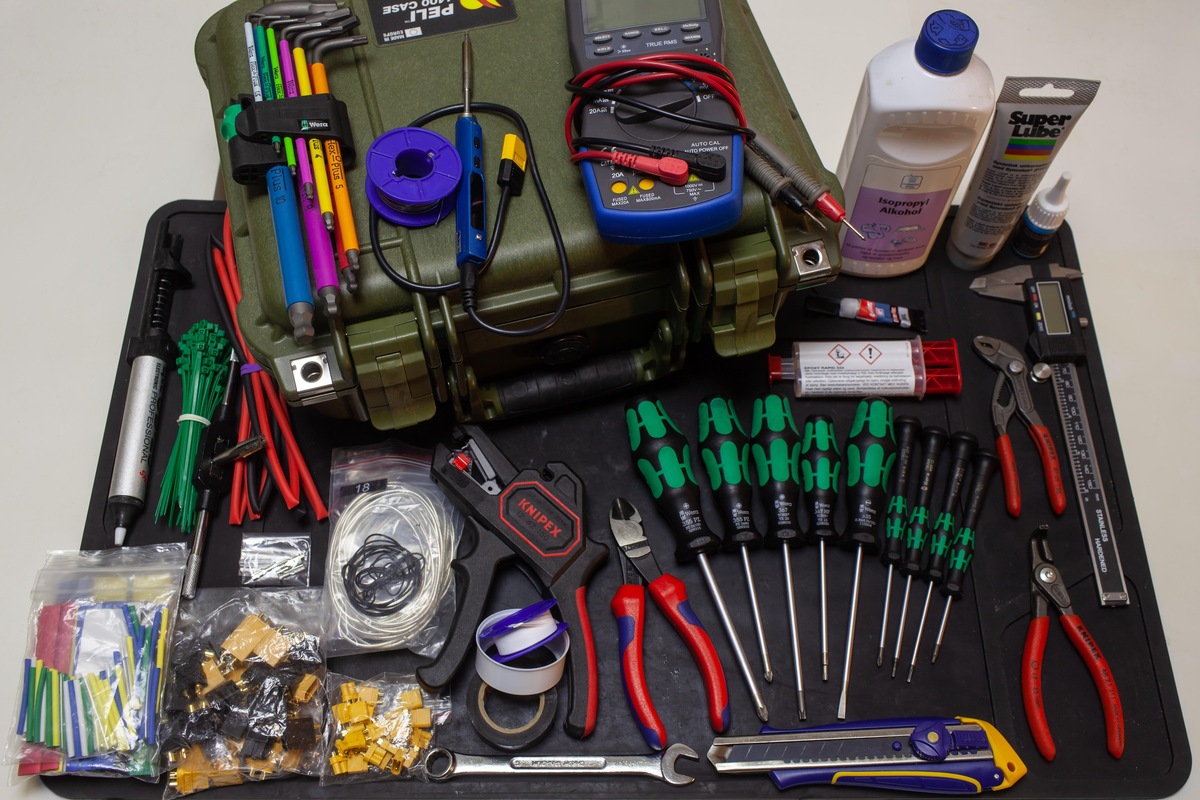
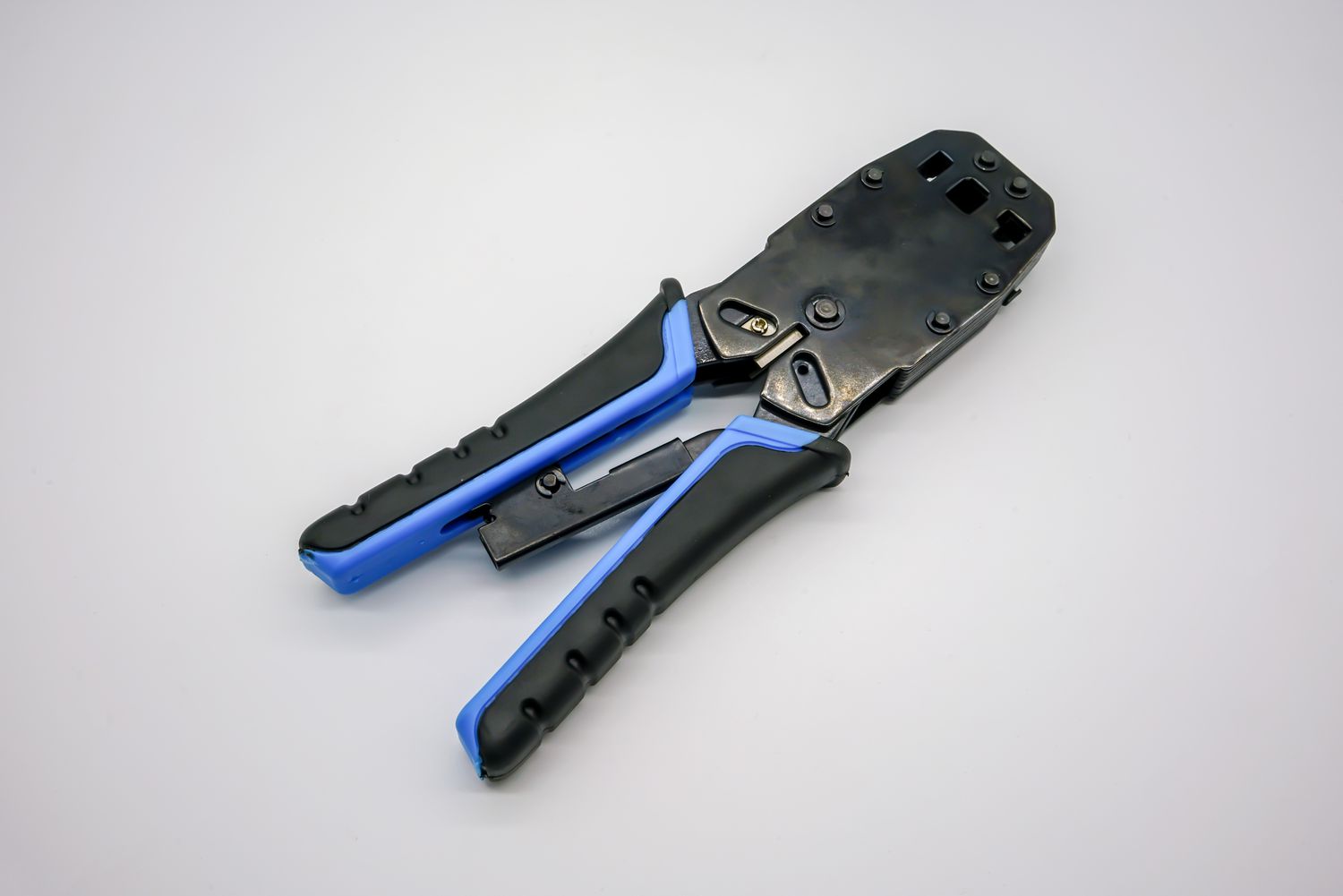




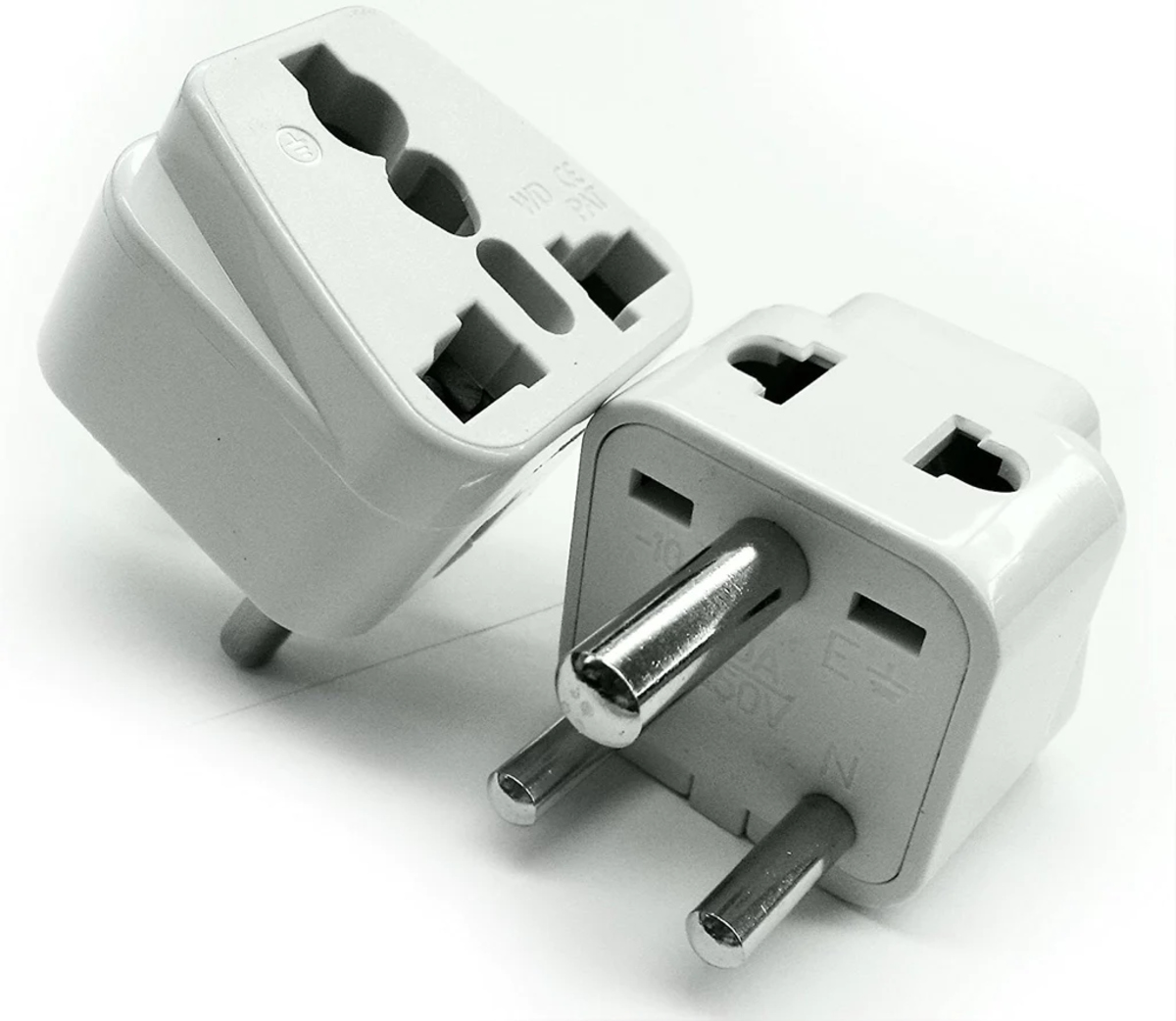


0 thoughts on “What Hand Tools Do I Need As A Mechanic”